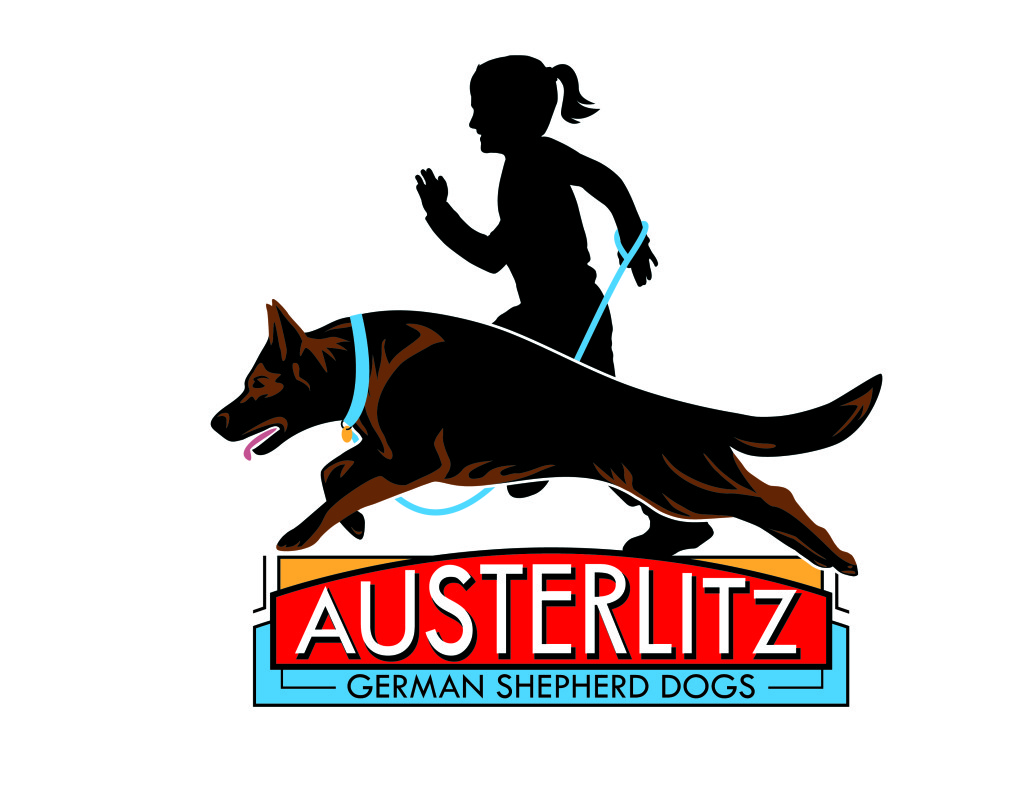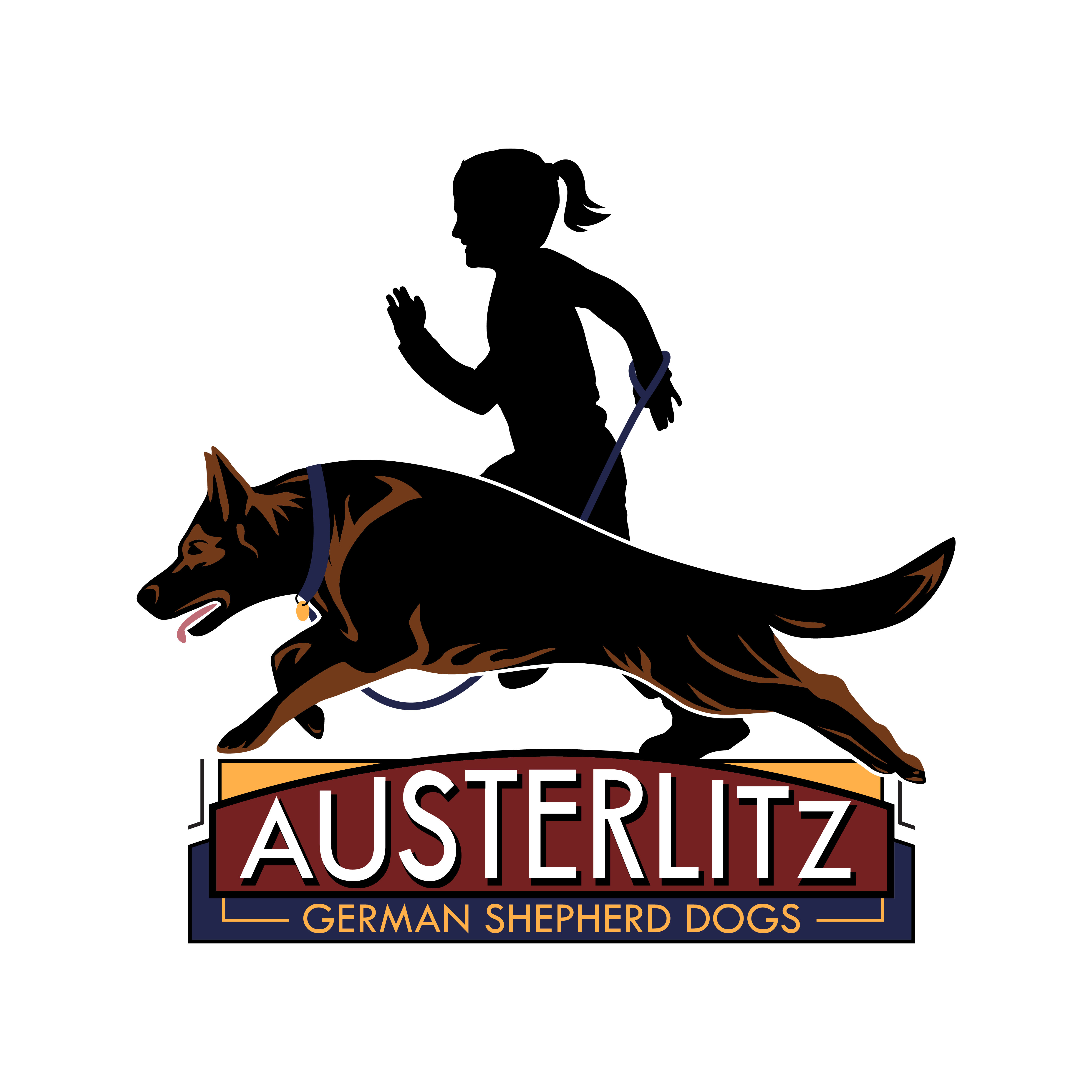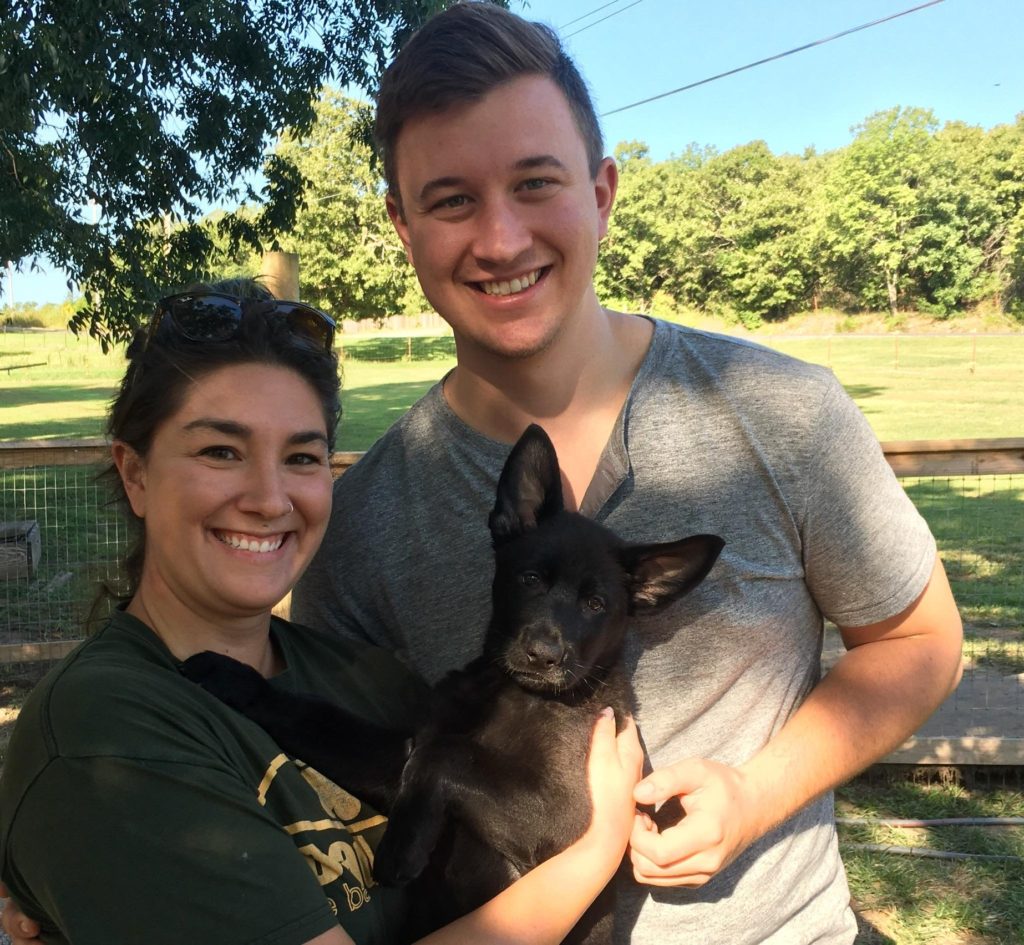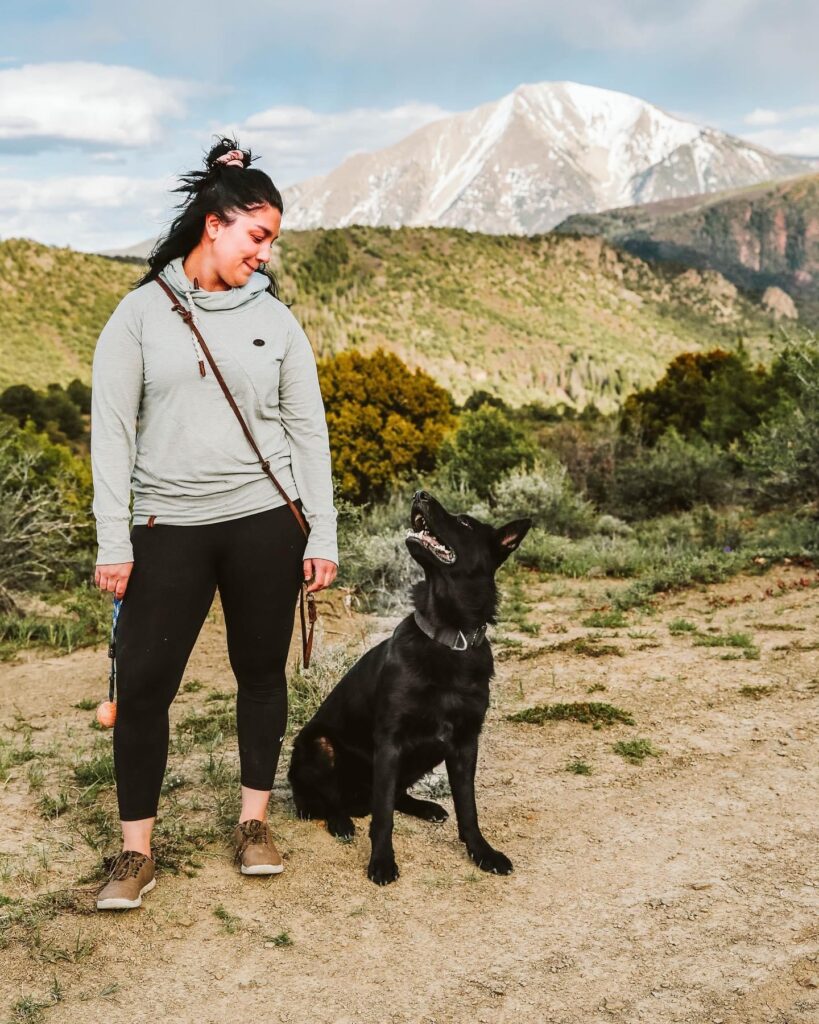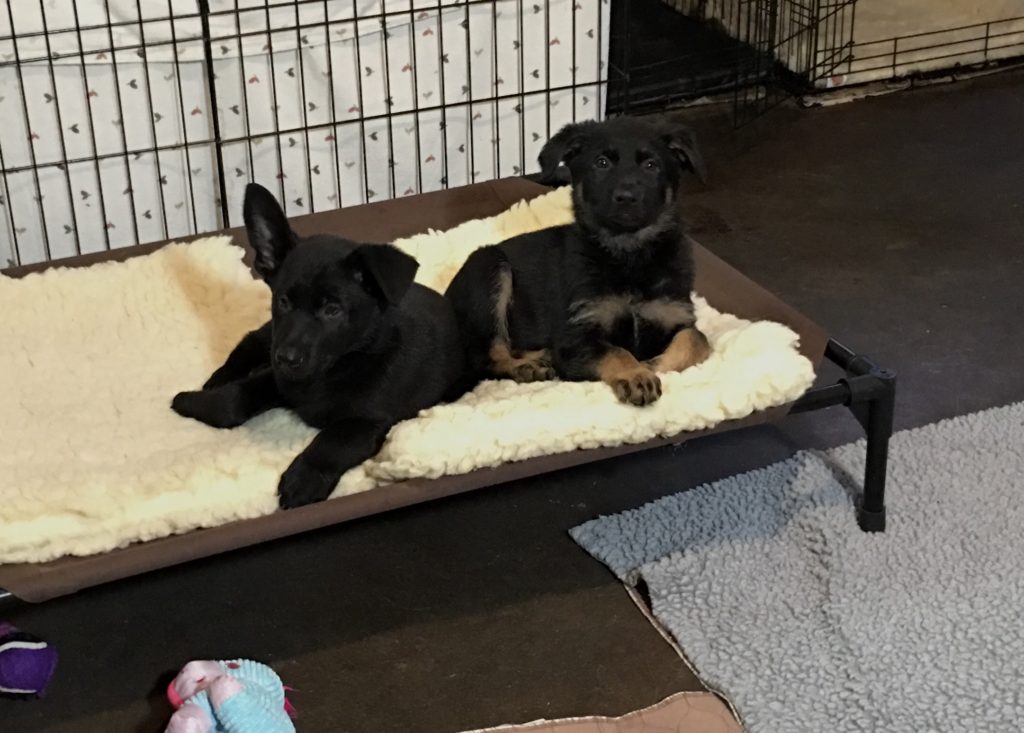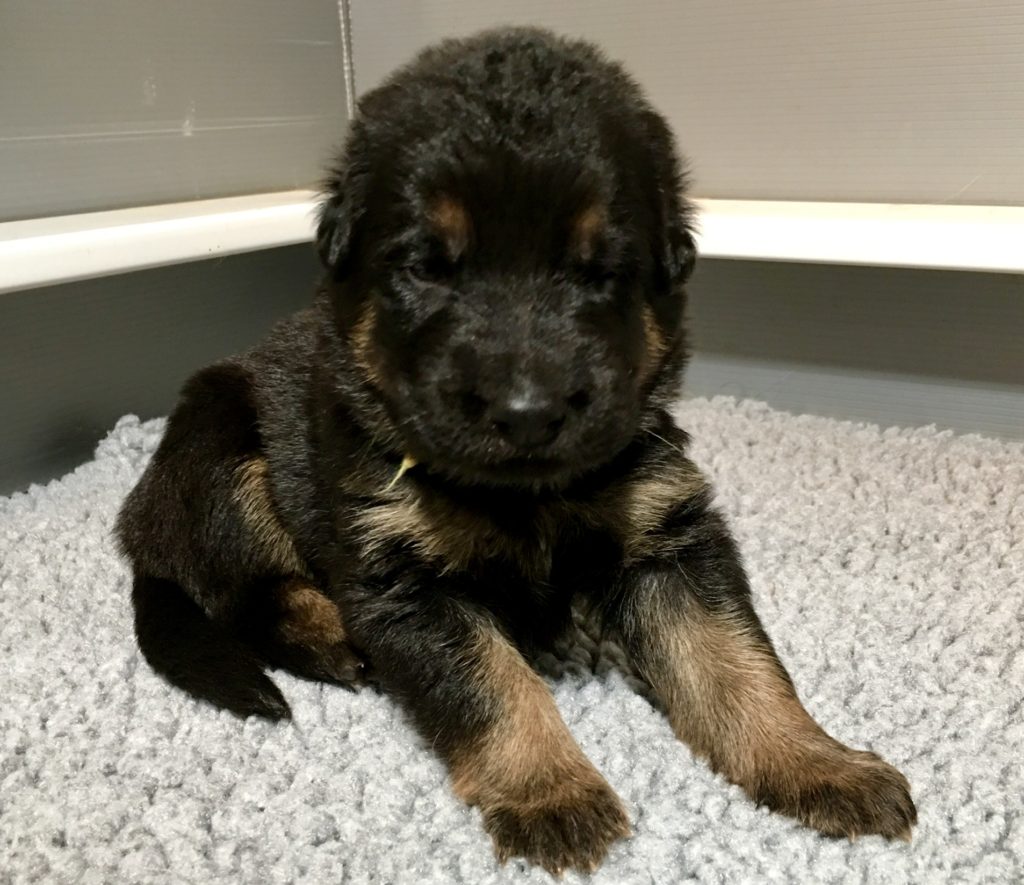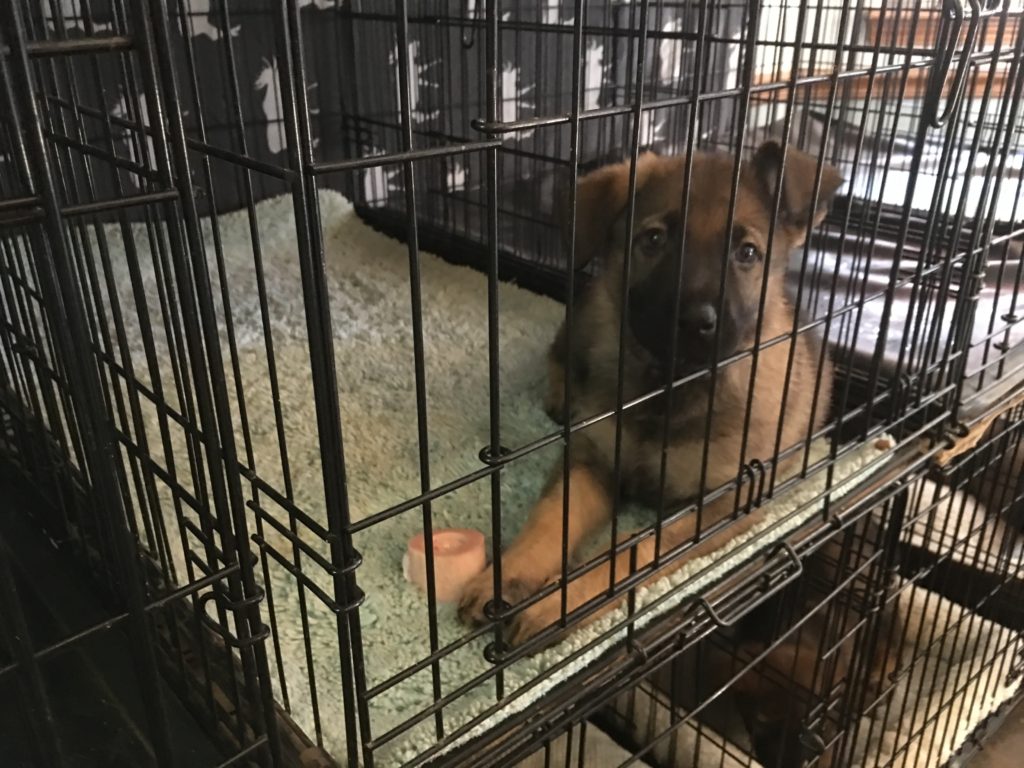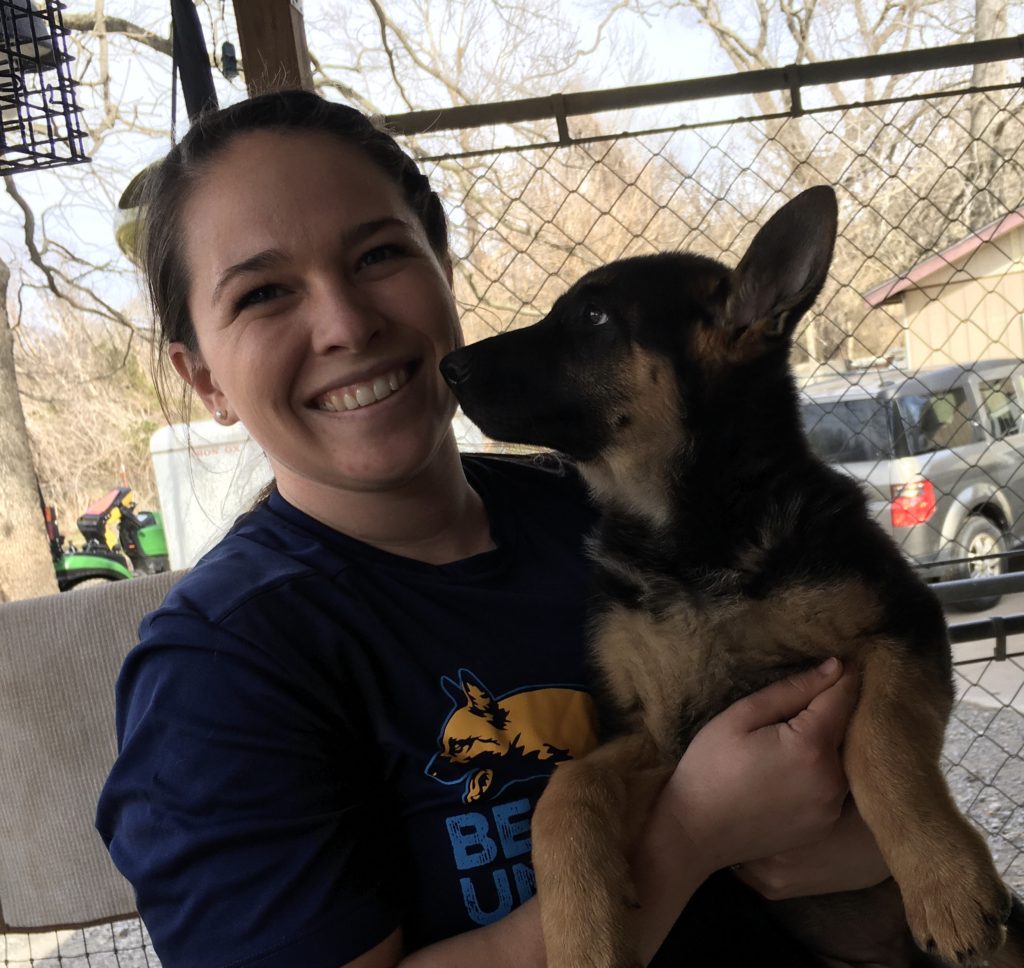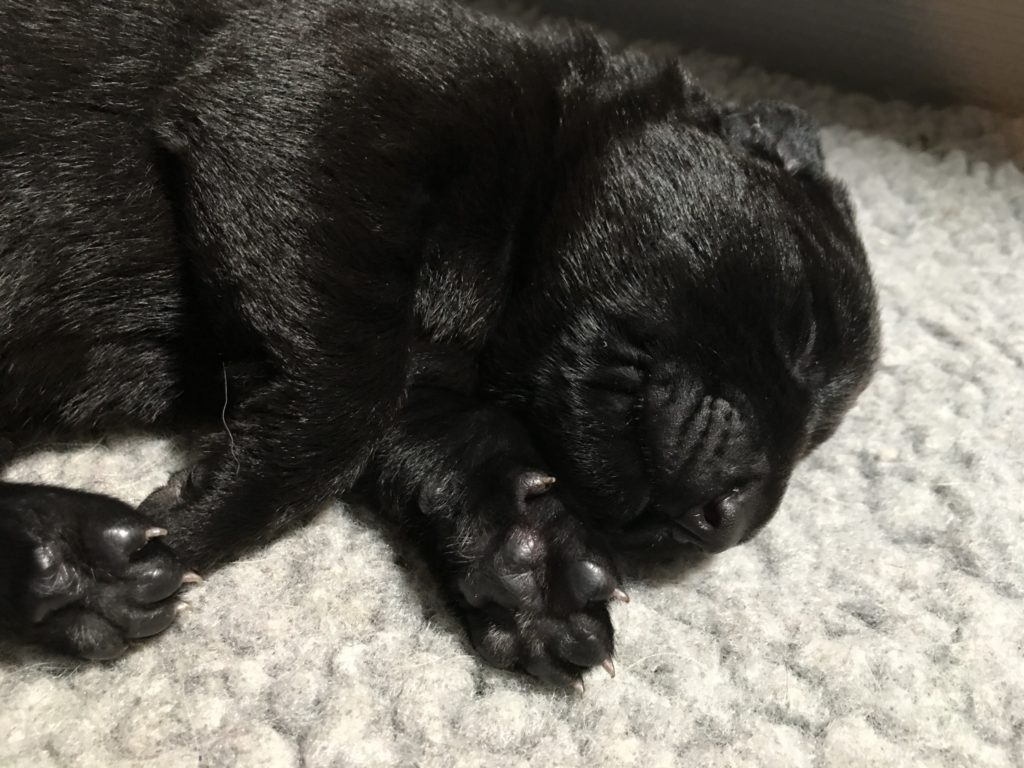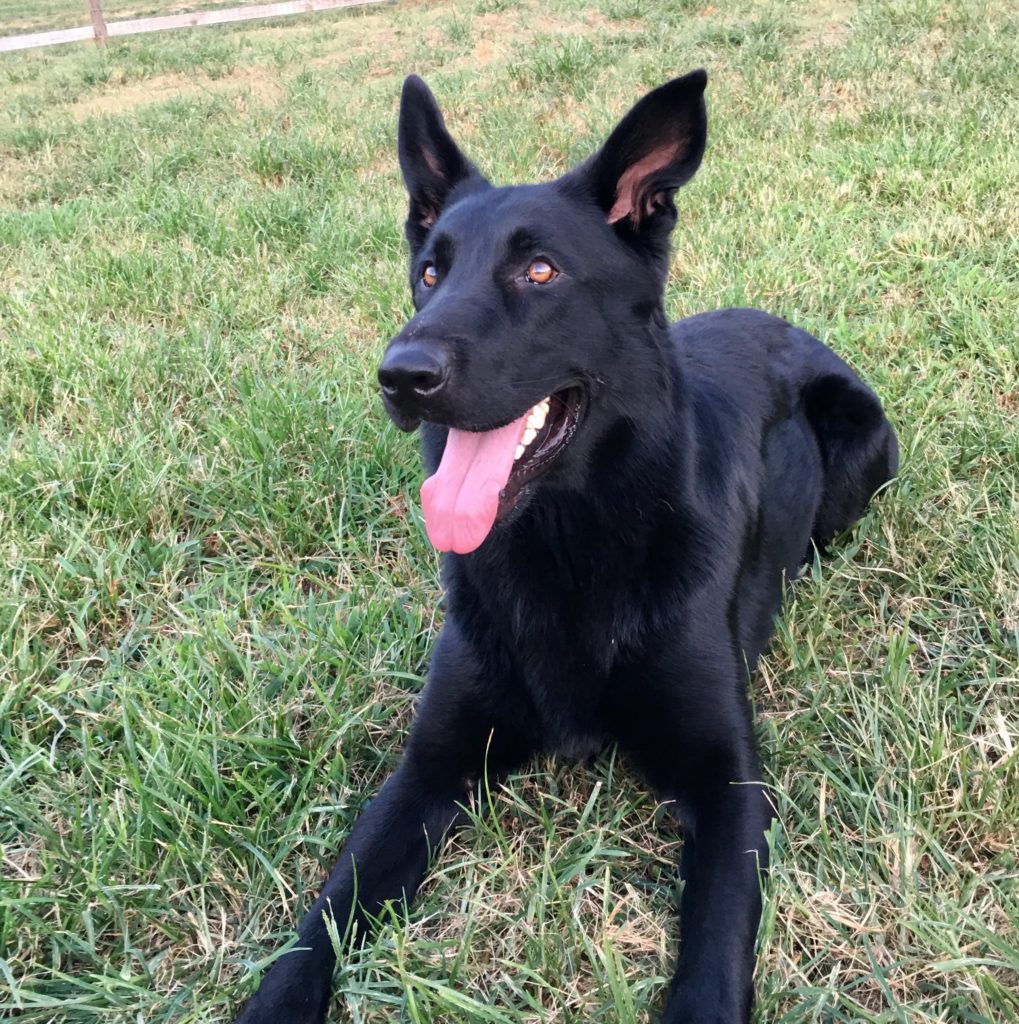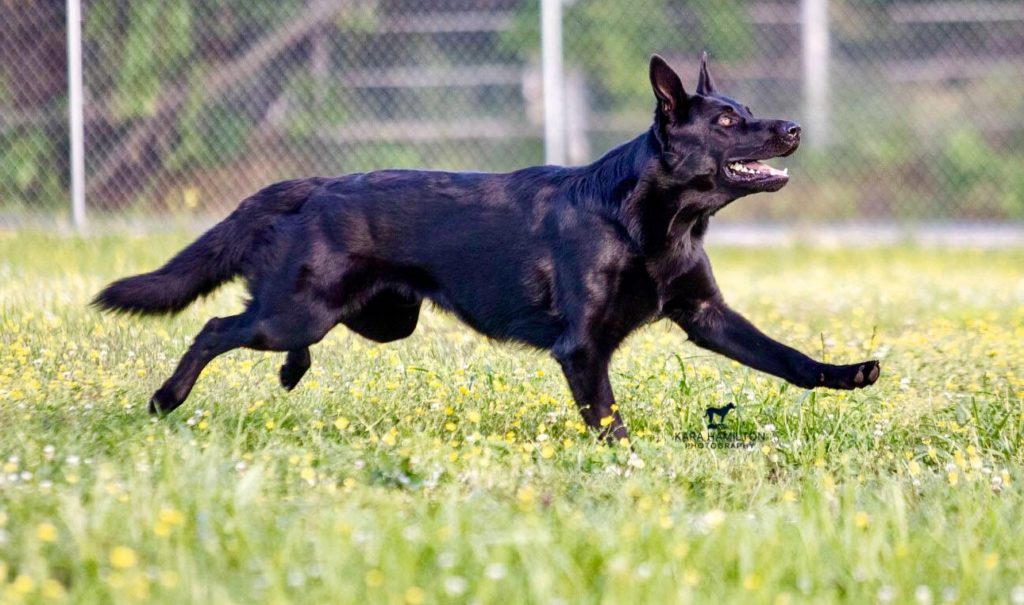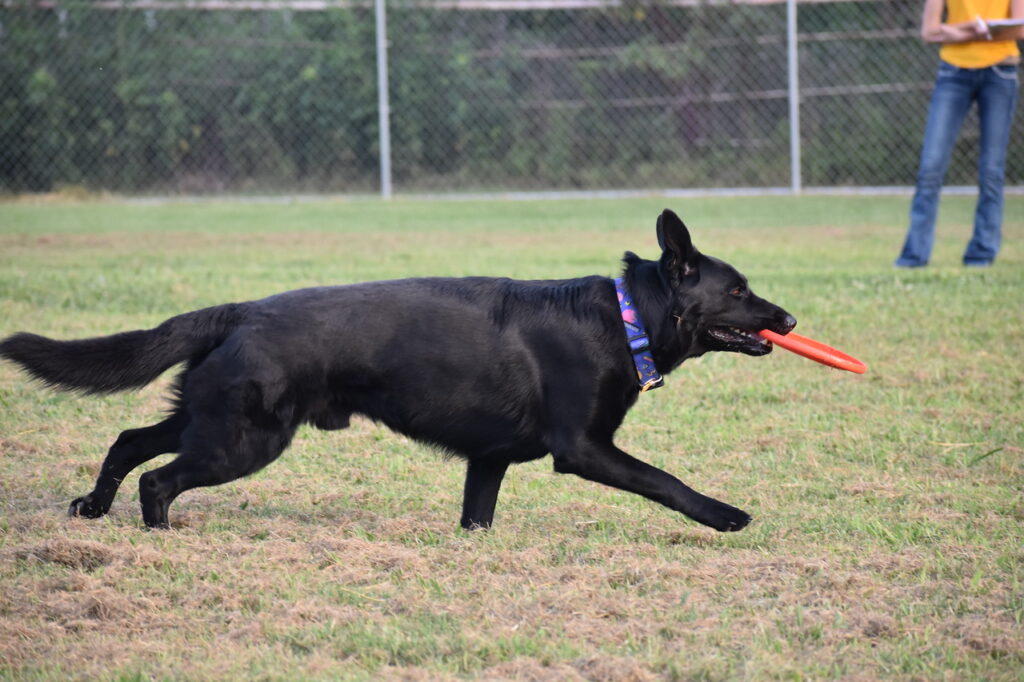First, the reasons we believe it is important for us to choose puppies for our families.
1. We have decades of first hand experience with the dogs in our pedigrees, many of whom we raised from puppies themselves. This means we understand the traits present in our dogs, and what traits are expected in a particular litter.
2. We have decades of experience working with puppy owners and their puppies, both those who have puppies from our program and those who take classes with us through Clickety Split Dog Training.
3. We have spent hours and hours of time working with our puppies. This means we know each puppy and have lot of observations about their behavior and personality.
4. We know our clients, we have put considerable effort into getting to know our clients so we can best understand their needs in a German Shepherd Dog.
5. Ultimately we are responsible for our puppies for LIFE, while puppy owners may relinquish responsibility and return the puppy to us, the buck stops with us, and so in the end we are responsible for the choices we make, or allow to be made, for our puppies.
This means that there is just no comparison between our methodical and information based system of puppy placement and the emotion driven choices made by well meaning puppy seekers flush with puppy fever, but very little experience or knowledge.
Second, the system we use to make selections.
1. Screening at the website level. We have designed and written our website to act as our first level of filtering. We provide an abundance of information about all facets of our program and we place responsibility for exploring that information on the puppy seeker. This weeds out impulsive puppy seekers, and those who have little interest in investing their time and effort into their puppy.
2. Screening at the contact level. We have designed our contact flow system to answer common questions, provide links to necessary information, and again, to discourage impulse puppy seekers and those who think puppies are easy.
3. We know that the GSD is not an easy breed to live with. These dogs need considerable commitment from their owners, so each step of our selection process is designed to filter out those who are unlikely to “put in the work” with their dog. This means even before we send out the questionnaire we are thinking about how to encourage good prospects while discouraging high risk prospects.
4. Program Level Screening. Once we have the New Client Questionnaire in hand we immediately screen out those who are just not right for our program. This doesn’t usually mean they are not right for the breed, just that our program doesn’t best meet their, and our, goals.
5. Litter Level Screening. For those clients who are right for our program our next task is determining if a particular litter is right for their needs. While our traits are pretty uniform (as any good breeder’s should be) this doesn’t mean that there are not subtle differences from litter to litter. Our job is to do our best to recognize the needs of the puppy seeker, and match those to the expected traits in a particular litter. When those don’t match up, it’s our job to communicate that to the puppy seeker and shift them to a future litter.
Finally, as we are raising the puppies we are making the final puppy placement decisions. This is never done impulsively, or carelessly, but instead is done using our decades of experience with our families and our bloodlines and our new knowledge of the needs of our families. Here are a few of the things we consider.
1. Sex: Sex is a very important consideration, especially if there are dogs in the home, as most dogs do best in opposite sex pairs. Sex also affects size (males generally being about 20 pounds heavier than their sisters) and for some owners the size is important.
2. Mouth Skills: A puppy who tends to have a “hard mouth” will usually outgrow this trait, but during that time these puppies can be really hard on small children. So we need to consider this.
3. Prey Drive: Some puppies have more, or less, “chase and bite” instinct, and while it’s true that the puppy biting stage only lasts a few months, these puppies will chase and bite more and so again, we need to be sure we find unflappable and experienced owners for these high prey drive puppies because we know those types of owners do best with enthusiastic chaser biters.
4. Structure: Structure is most important for puppies who will be living a physically demanding lifestyle. Adventure buddies, sport dogs, service dogs, and farm dogs, often move the most and from an early age and traits such as flat feet, short underlines, imbalanced degree of angulation front to back, while harmless and unnoticed in a typical companion dog can make for long term soundness problems for hard working dogs.
5. Color and Coat: While these traits are cosmetic they are occasionally very important to our puppy owners and we want to respect that. So these are traits we also have to consider as we make placements. There are two coat types for our breed (that are commonly seen) and our program produces three colors (sable-all shades, black and tan- all shades, and solid black).
Now, to the things we rarely if ever consider because while these things may be present in puppies they are transitory and NOT a good way to predict which puppy will flourish in which home.
1. High Drive/Low Drive: These labels are just not real, they don’t describe real traits we can identify in a puppy.
2. High Energy/Low Energy: Again, while a puppy may be busier or more laid back, this type of behavior is transitory and often the “laziest” puppy in a litter will mature out to be just as busy as it’s siblings and the reverse is just as true.
3. Dominate/Bossy or Sumissive/Shy: Again, while a puppy may be quite a pill with the litter, be quite bold, and another may be picked on, or slow to explore, these traits are common and often a single puppy will exhibit ALL of these behaviors during the first 9 weeks. Our years of experience and knowledge also allows us to recognize if a puppy is not behaviorally typical, and just like for a true runt, we do not place puppies that are not behaviorally normal and typical.
4. Larger/smaller: Within the bell curve of normal size for a puppy there is considerable variation. A puppy may be larger or smaller due to the quality of it’s placental attachment, crowding within a uterine horn, or a slow to come along suckle reflex but these sizes rarely hold true. Generally puppies within a litter will mature out within a few pounds of their same sex siblings. Note: Runt is often a term applied to a small, but normally sized puppy, and that is not correct. An actual runt is a puppy so extremely small it’s well below the small end of the bell curve for size/weight, these puppies can have (but don’t always have) congenital defects that might affect their health later on. We do NOT sell true runts, but instead either keep them and grow them out, or place them with trusted friends, so we can determine as they mature if they are healthy. Thus far, our program has produced only 2 true runts, one was our beloved Vespa (not healthy or normal as an adult) and the other Portia (completely normal sized and healthy as an adult). Again, we would never sell any puppy that is not typical in size, health, and behavior.
5. Show Quality/Working Quality: While these labels are often used by breeders to bring a higher price for one puppy than another, we really do not believe this is ethical. There is NO WAY for a breeder to evaluate the show or working potential of an individual puppy. Yes, structural assessment can be done, but those are of little use if testicles don’t drop, the bite goes off, or any other DQ fault, or structural fault develops. Yes, there are lots of Puppy Aptitude Tests that breeders love to use, but the research on such tests (which is extensive) proves that there is NO PAT that accurately predicts adult behavior, yet alone talent for show or sport. We have placed lots and lots of show and working titles on our home breds, and none of those showed any special shiny label that guaranteed their talent. Purchasing a puppy for show or sport is a crap shoot, and boils down to pedigree knowledge coupled with the talent and work ethic of the new owner much more than anything we can see at 9 weeks.
So, to sum up, we choose puppies for our families because we are responsible for each puppy we produce, and nobody is better qualified than the are to choose a puppy for your family. Not only do we have the experience and skill to do this work, we value each and every family that chooses to get a puppy from our program and it is our sincere effort to do our best by our puppy and our client.
You may have also noticed, that picking individual puppies is FAR FAR less important than choosing breeding program carefully, because in the end the talent of the breeder and the quality of the pedigree is the really important part.
Nuts and Bolts
1. We will select the puppy for each family, with input from the family based, and on our observations and skill.
2. For those families who can attend Puppy Parties, we also take our observations from these days into account.
3. Puppies are selected between the age of 7 and 9 weeks. We usually know by the 8 week Puppy Party who is going where.
4. Do NOT get attached to certain puppies simply because they are more photogenic than other puppies. Try to observe all the puppies as we post about the litter. Remember to keep your mind open to all the puppies and not to get fixated on a particular one.
5. Placement decisions are usually announced at the 8 week puppy party.
In the end, the dog your puppy grows into depends far less on which puppy from the litter you bring home, and more on the breeder you choose, and your own hard work, care, love, attention, and skill as your raise your puppy.
When it doesn’t matter: If you are not getting a puppy from a program like ours, it may not matter if the breeder picks your puppy for you. The breeder may house their puppies in a kennel and not really know each puppy very well. The breeder may not be very well educated in puppy raising, or breed traits, pedigree, learning theory and etc. The breeder may have purchased (instead of bred) their breeding stock and really not know the dogs or traits in the pedigree very well. The breeder may have lots of puppies on the ground at once and not have time for spending hours with each litter. The breeder may not do any interview process, or may not know what questions to ask. The breeder may be hoping that Puppy Aptitude Testing will give them a crystal ball into the puppy’s future (it won’t). None of those things are “bad” they just reflect different priorities for different breeders.
In such cases it probably doesn’t matter if the breeder, or the client, chooses the puppy. The breeder may use a “first come” process or charge more for “first pick” (don’t pay more for first pick unless you know enough that your pick is meaningful) and that’s fine. When this is the case don’t get hung up on who chooses, because it likely doesn’t matter.
